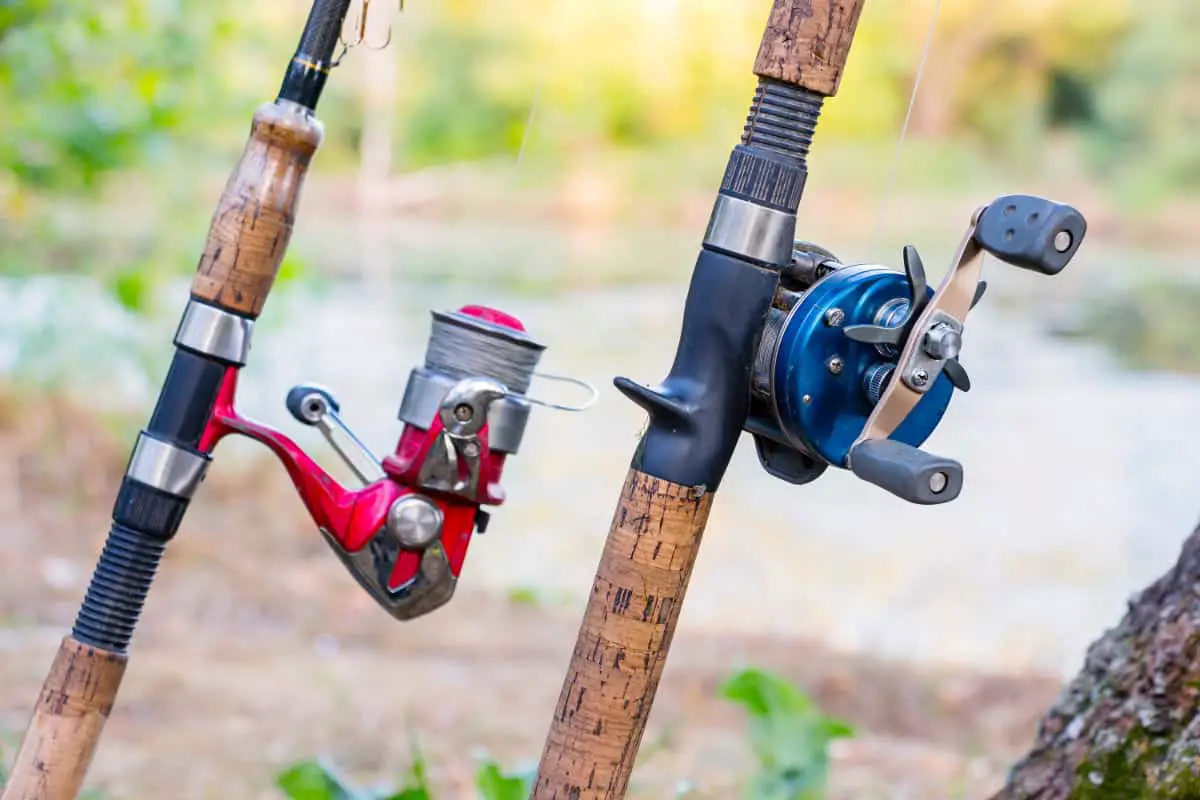If you are new to surf fishing, you may have discovered something. Something extraordinary. You cannot just go ahead and buy just any type of fishing rod.
Although very subtle, there are many important factors and differences that, when combined, can either make your next fishing trip an enjoyable experience or just a very confusing and annoying one. There are different types of fishing rods, but the main two are the casting and spinning rods.
What’s the difference between baitcasting and spinning rods? The differences between baitcasting and spinning rods are very subtle but easy to spot. Baitcasting rods are designed to accommodate casting reels; they have line guides of similar size and a small trigger on the handle. Spinning rods are designed for spinning reels. They have more prominent line guides and lack the trigger grip.
‘There’s only so much one can do without a good surf fishing rod. This is why understanding how these differences translate into the real world of fishing is crucial.
If you want to learn out more, read on.
What you will find out is what you need to know about the differences between the two fishing rods and how these differences can affect you.
What Are the Differences Between a Baitcasting and Spinning Rod?
There are a few main things that you need to look for to find out what kind of fishing rod you are dealing with.
The Fishing Line and Fishing Reel Placement
With baitcasting rods, the fishing line runs on top of the rod, whereas with spinning rods, the eyelets and the fishing line are below the rod.
The fishing reel on the baitcasting rods is also on top compared to spinning rods where it is underneath the rod.
However, if you take a look at two fishing rods that do not have any fishing reels on them (and no fishing line), it will be hard to distinguish what kind of fishing rod it is.
You can just turn it the other way around, and it can be any type of rod. Right?
Fortunately, there are a few other things we can look for. One of which is the trigger grip.
The Trigger Grip
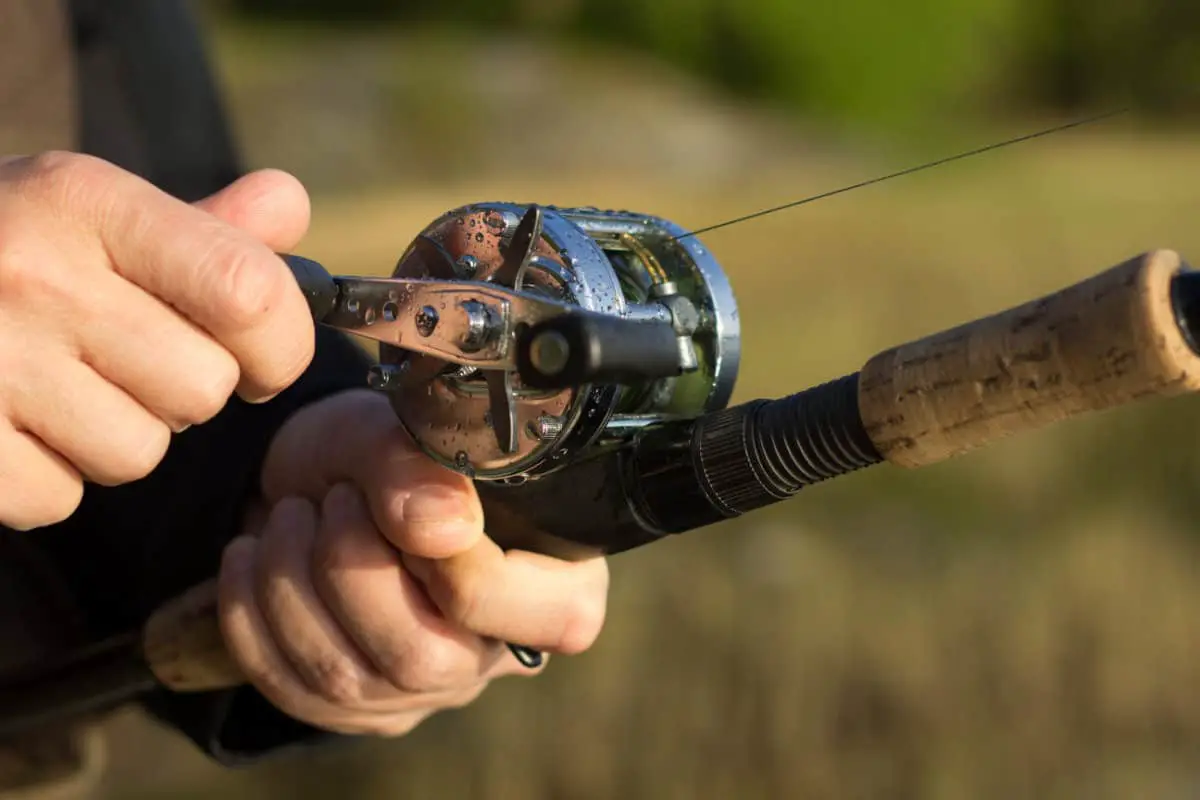
Look at the handle.
If you have a baitcasting rod in front of yourself, you will see a little trigger grip – very similar to what you will find on a pistol (actually many anglers refer to this as a pistol grip).
This little trigger is placed there to provide better grip and stability when holding the rod.
A spinning rod will not have such a thing. Many anglers use the fishing reel itself as a trigger grip.
It is essential to point out that not all casting rods will have the trigger. So it may not always be clear as to what type of rod it is.
Luckily there is another universal thing and a clear giveaway – the line guides.
The Size of the Line Guides
This may take more of a trained eye to spot, but the eyelets on a baitcasting rod are a bit different compared to a spinning one.
With a spinning rod, you have eyelets that near the handle are very big, and as they reach the tip of the rod become significantly smaller. It is straightforward to see and spot the gradual change in the diameter of the eyelets.
Whereas with baitcasting rods, the change is harder to notice. Usually, the first eyelets are a little bigger and become smaller as you reach the tip. But the difference is less noticeable because they are almost the same size.
This is usually the best way to spot a baitcasting rod.
The Type of Fishing Reel
Hands down, the simplest and fastest way to spot the different rods is by taking a look at the fishing reel installed on them.
Also, by choosing one type of rod over the other, you will be affected by the differences between the two types of reels.
What Kind of Fishing Reel Do Baitcasting Rods Use?
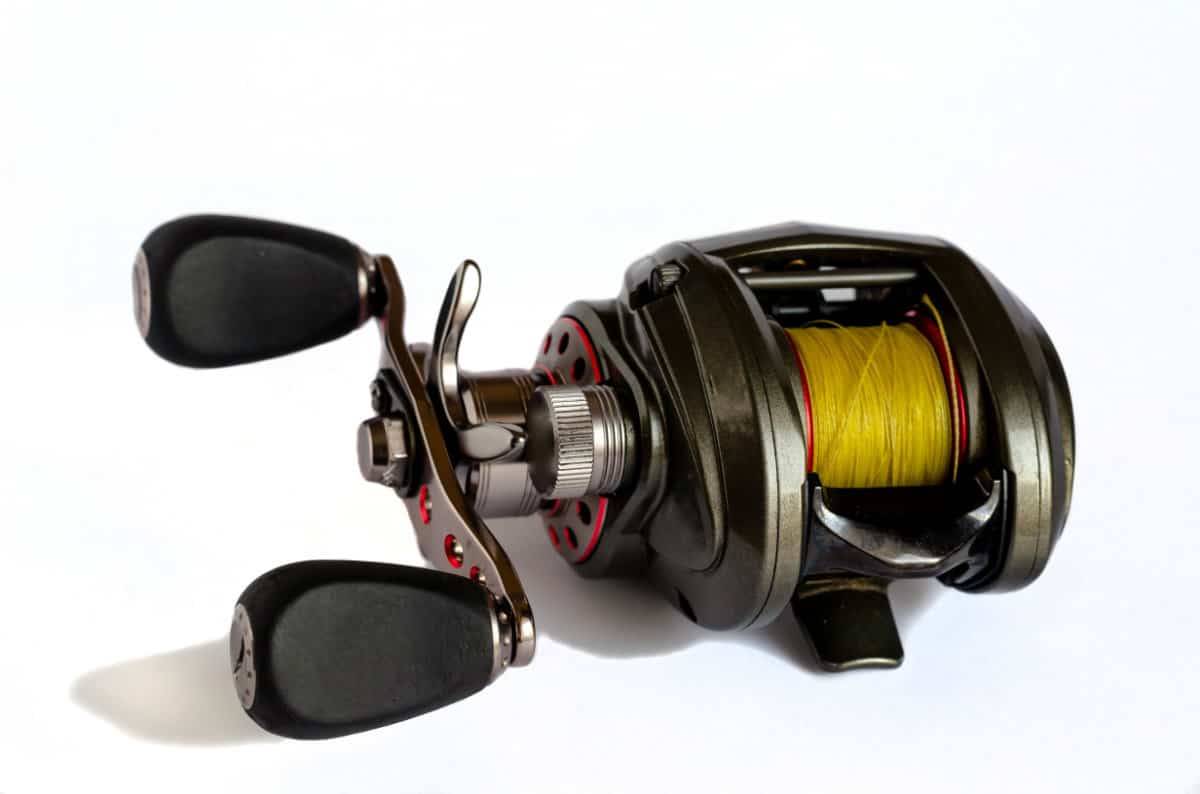
Baitcasting rods are used with a baitcasting fishing reels (they are also known as casting reels and conventional reels). The easiest way to remember this is that a casting rod goes with a casting reel.
So what are baitcasting reels?
The pros of baitcasting reels are that they give you more control over tour casting and better accuracy. You can do that by simply applying pressure on the spool with your thumb.
With a bait caster, you can achieve a bit longer casting distances, and they can normally accommodate more fishing line on the spool.
Another advantage of baitcasting reels is that they have a faster gear ratio. This will allow you to retrieve high amounts of the fishing line back on your spool with just a few turns of the handle.
On the downside is the higher risk of a backlash happening.
If you enjoy fishing with lighter baits and lures, a spinning reel is going to perform better.
Baitcasting reels are better for experienced anglers. Although everyone can start with one of these, it is not recommended.
There is also another type of fishing reels that can be used with a baitcasting rod known as spin casting reels. These are great beginner-friendly fishing reels that probably many of you have used as kids.
What Kind of Fishing Reel Do Spinning Rods Use?
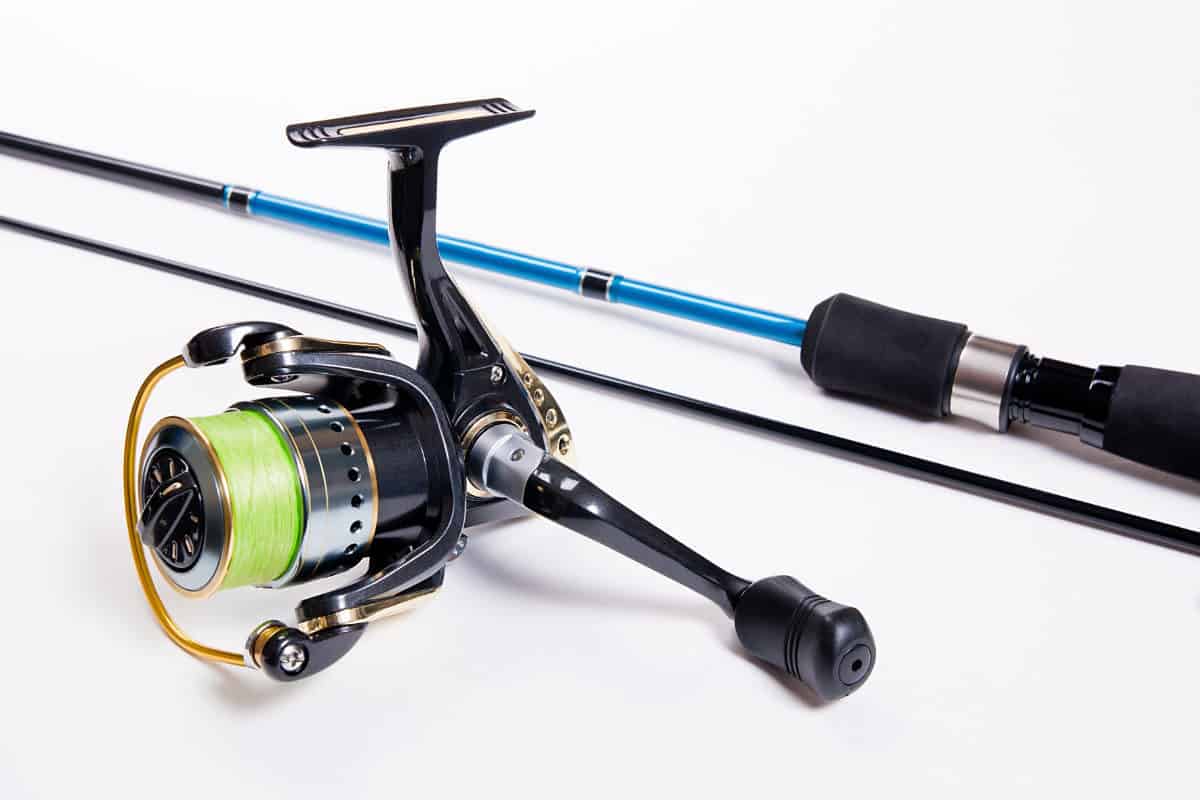
Spinning rods in a similar manner go with spinning fishing reels. So let us see how they compare to the conventional reels.
First things first.
The spinning reel is the reason why a surf spinning rod will have bigger eyelets. The line will be feeding off the spinning spool, and it will not be coming out from the same plane. Smaller line guides will create more resistance and seriously affect the casting distance.
A spinning reel is going to be very different compared to the conventional one.
Frequently they are viewed as a fishing reel for beginners. And that is true. But some people may negatively see them as a result of that.
They are a lot more beginner-friendly, but this does not mean that they are suitable only for beginners.
Spinning reels are a lot more versatile and easy to use. They allow for effortless casts and do very well with both light and heavy lures and baits. Also, these reels come with an audible drag, which makes fishing extra fun.
Of course, spinning reels do come with their cons as well.
Usually, you have less control over your cast.
Spinning reels are also prone to backlashes. But, the chances of a backlash happening are significantly lower.
Over the years and especially with the invention of the braided line, few spinning reels![]() cons have been eliminated.
cons have been eliminated.
With braided line you can easily fit a lot of fishing line on your spool, its smaller diameter allows for longer casts, and the lack of memory makes long-distance casting a breeze.
Can You Use a Spinning Reel on a Baitcasting Rod or a Baitcasting Reel on a Spinning Rod?
This is one of the numerous questions that I have been stumbling upon over the years.
Technically speaking, you can use a fishing reel that was not designed for your fishing rod.
But, should you do it and is it a good practice?
No, it is not a good practice, and you should not do it. You are going to be compromising with the casting distance, and frequently it will be just harder to fish that way.
You will not break the fishing rod or reel, although you may be risking wearing out the fishing line prematurely.
How You Hold a Baitcasting vs. a Spinning Rod?
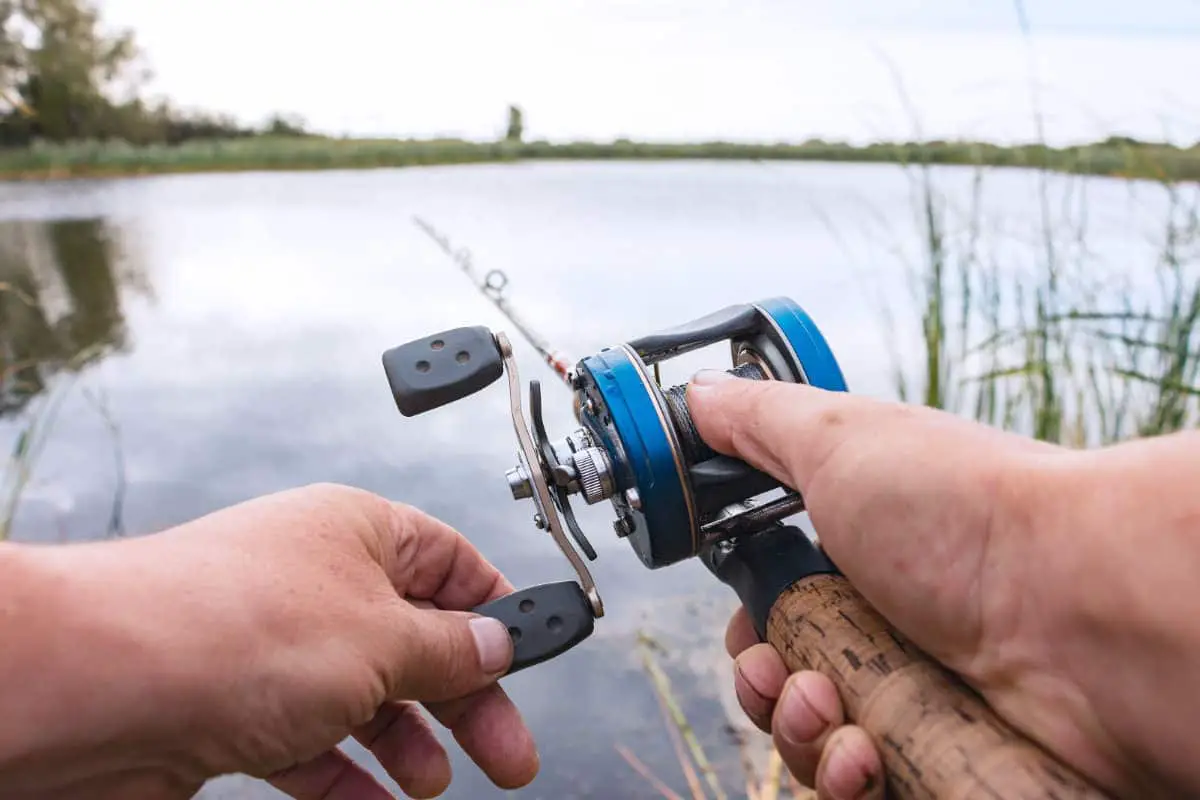
One of the main differences between these two rods is going to be the way you hold them. Depending on whether you are a left-handed or a right-handed person, you may run into some problems here.
On the baitcasting rods, the line and the reel will be on top. Now that you know that they also use a specific type of fishing reel (the bait caster reel), you can see what the difference in holding the rods will be.
You usually will hold the fishing rod with your left arm, and you will crank it with your right hand.
With a spinning rod, things will be quite different, with this type of rod, you will be using a different fishing reel (the spinning reel).
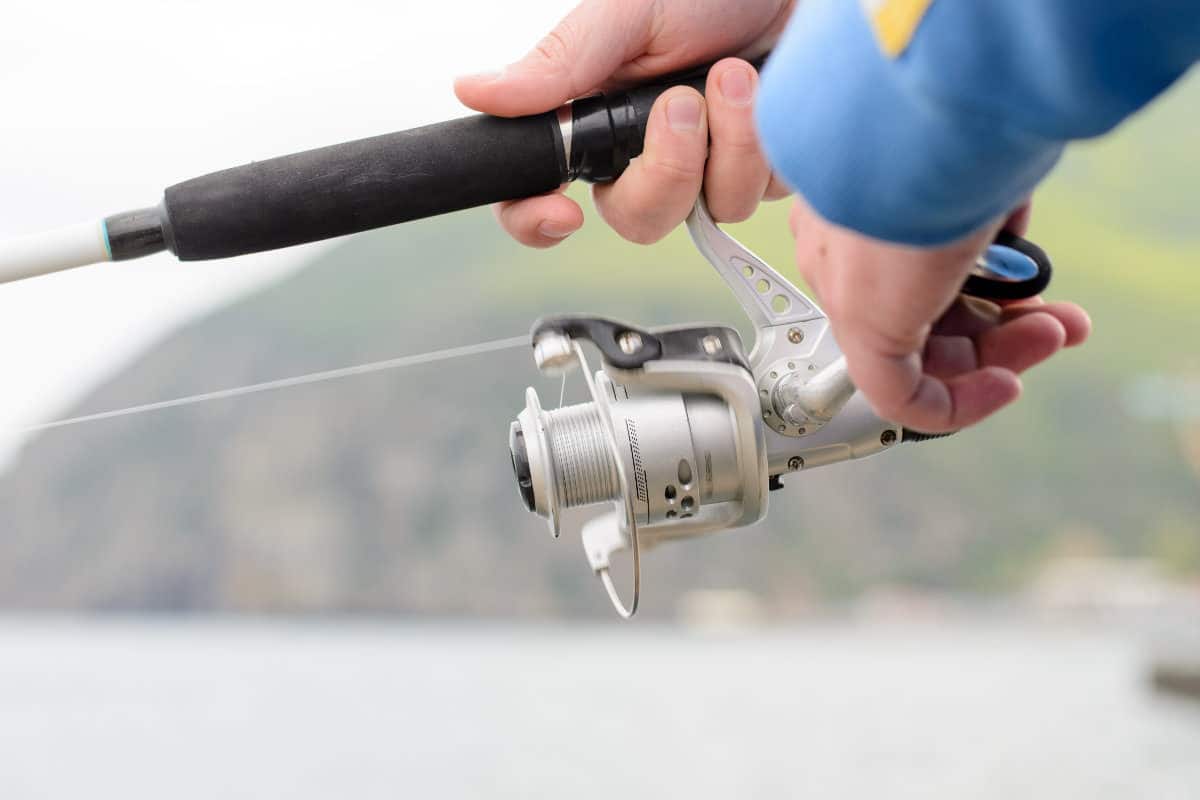
Typically you will be holding the rod with your right hand (with the reel underneath the rod) and cranking it with your left hand.
The good thing here is that the spinning reels can usually be switched from left-handed operation to right-handed one and vice versa.
On the other hand, the baitcasting reels are usually not that versatile, although, on some models, you can change the placement of the handle.
What Kind of Materials Is Casting and Spinning Rods Made Of?
When taking a look at what materials modern fishing rods are made of, you will find out that there is not much difference between casting and a spinning rod.
In the past, fishing rods were frequently made from bamboo. And there are bamboo rods that can be found even today.
Nowadays, fishing rods are typically made from either carbon fiber, fiberglass, or a combination of the two.
Fishing rods made from fiberglass are considered best when you are fishing for larger fish. Fiberglass is more robust and more durable.
Conversely, carbon fiber is still the first choice for many anglers because it can do everything a fiberglass rod can and then some. One of its downsides is that it is considered a stiffer and more brittle material.
However, the capabilities of your fishing rod are not determined solely by the material. Granted, it has a significant impact on how your rod acts, but there is something more that we need to take a look at.
Its action and power ratings.
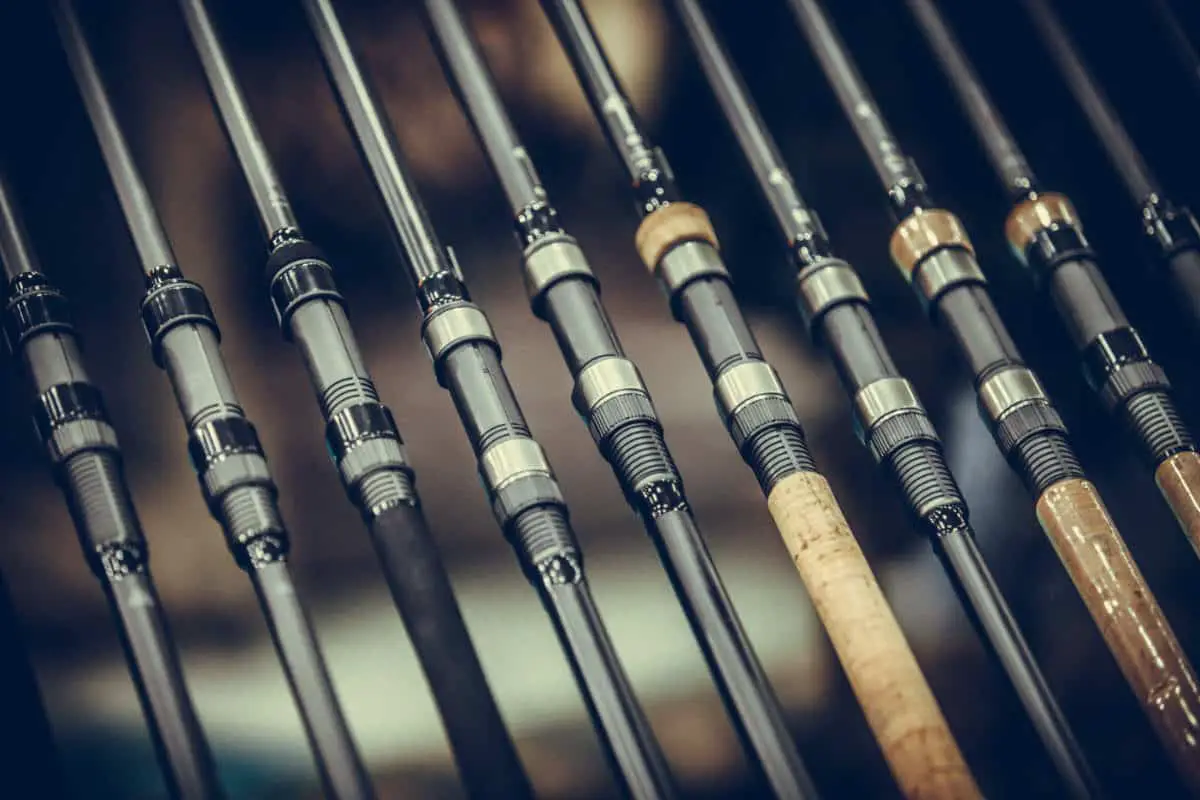
To a large extent, these are independent of the material. Each material can be made to have different action and power ratings by varying various aspects of the rod, like its thickness, for example.
The only advantage carbon fiber has over fiberglass is that it can offer a little higher speed and also less material is needed. So if we take two fishing rods of the same power rating, the carbon fiber will be a little lighter.
So when it comes to baitcasting and spinning rods, there will not be a lot of difference as this will depend on the material used and the rod’s ratings.
With that being said, and this may not always be true, but frequently, a surfcasting rod will be much stiffer compared to a surf spinning rod.
This allows for better leverage when reeling in big fish on close distances with a casting rod.
Pros and Cons of Spinning Rods
Spinning rods are usually a lot more beginner-friendly, mostly as a result of the spinning reels. And generally speaking, you will have a lot easier time fishing with a spinning rod.
They offer the right amount of control and are perfect for fast action, finesse, and surf fishing.
Usually, they have better sensitivity and responsiveness to them, making even the smallest bites more noticeable.
On the downsides is the fact that they are not as tough as the baitcasting rods. This is making them not suitable for going after some of the huge fish out there, especially if you are going to be doing some trolling or deep water fishing.
Because most spinning rods are used for freshwater fishing, not all of them will be perfectly suitable for saltwater, and extra care is advised when buying one.
Pros and Cons of Baitcasting Rods
Baitcasting rods provide for longer casting distances and better casting accuracy.
These are tougher and have more backbone to them, making them suitable for catching bigger fish.
Baitcasting rods are preferred for trolling![]() and are typically recommended for experienced anglers.
and are typically recommended for experienced anglers.
The negative side of the baitcasting rods is that they are usually more prolonged and more substantial, making them hard to use if you will be casting all day.
One of the most significant disadvantages, on the other hand, is that since they go hand in hand with a casting reel, there is a higher chance of tangles and backlash.
Does the Type of Rod (Baitcasting or Spinning) Affect How Far a Fishing Rod Can Cast?
When it comes to solving baitcaster casting distance, the type of rod plays a crucial role. Baitcasting rods are designed for precise, long-distance casting, while spinning rods are better for casting lightweight lures. Ultimately, the angler’s skill and the rod’s specifications are the key factors in determining casting distance.
Is a Baitcasting or a Spinning Rod Better for Surf Fishing?
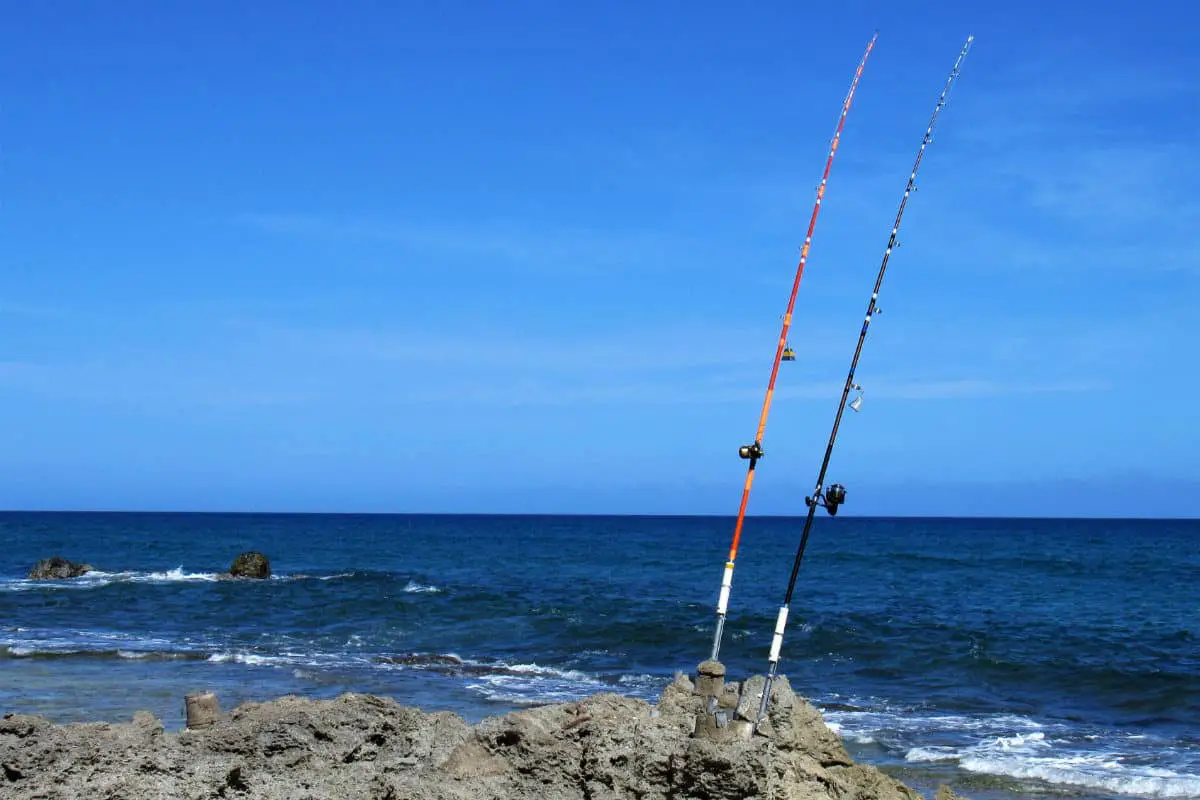
Both rods can be used for surf fishing quite successfully.
Whether or not one will be better than the other will depend on your skill, application, how, where, and what you will be fishing, your individual needs, and circumstances.
Usually, the best rods for surf fishing are ones with medium action and power that are on the longer end of the spectrum – frequently 9 to 13 feet.
You may need higher versatility. And you will be typically casting at very long distances frequently way over 20 yards and sometimes even more than 100 yards. So a surf fishing rod and reel combo that will minimize the chances of wind knots and tangles happening is preferable.
This is why I would consider a surf spinning rod one step ahead over the surfcasting rod. It is just easier to learn how to use and allows for more fun while surf fishing.
Even from a convenience point, if you are looking for a rod that will give you the best amount of both versatility and freedom, I would go for a surf spinning rod.
The reason for this is that a fishing rod is only as good as the fishing reel and line you are using.
So when taking into account the pros and cons of spinning reels![]() , a surf spinning rod comes on top.
, a surf spinning rod comes on top.
Baitcasting rods, on the other hand, will generally perform better when fishing from a boat or trolling and fishing applications where more precision and control are required.
Some Baitcasting rods may, in fact, not even be designed for casting but rather for trolling or letting the sinker down slowly.
Baitcasting rods are also preferred for flipping and skipping baits.
Final Words
From a practical standpoint, both the spinning rods and the baitcasting rods can be used for surf fishing. There is not necessarily one fishing rod to rule them all so to speak.
Both have their applications and use.
Of course, things can always improve in the future. There are even interline fishing rods that have the fishing line run through the center of the rod.
Which one is going to be the best fishing rod for you will depend on your personal preferences, fishing techniques, location, and fish species you will be targeting.
I invite you to try different rods to find what feels best for you.

